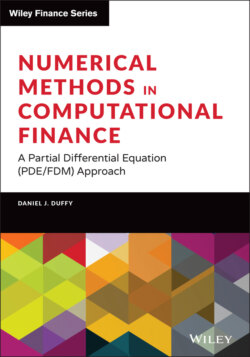Читать книгу Numerical Methods in Computational Finance - Daniel J. Duffy - Страница 86
5.5 FUNDAMENTAL MATRIX PROPERTIES
ОглавлениеWe first give a short history of how matrices were discovered.
The term matrix was introduced by the 19th-century English mathematician James Sylvester, but it was his friend the mathematician Arthur Cayley who developed the algebraic aspect of matrices in two papers in the 1850s. Cayley first applied them to the study of systems of linear equations, where they are still very useful. They are also important because, as Cayley recognised, certain sets of matrices form algebraic systems in which many of the ordinary laws of arithmetic (e.g., the associative and distributive laws) are valid but in which other laws (for example, the commutative law) are not valid. (Wikipedia)
We give a precise overview of the operations that can be performed on matrices. We mention that they subsume operations on one-dimensional vectors because the latter can be viewed as matrices with one column (or with one row, depending on the context).
The notation and operations for vectors are:
(5.13)
and for rectangular matrices:
(5.14)
Some special cases of matrices are:
Row matrix: has one row (row vector).
Column matrix: has one column (column vector).
Zero matrix: all entries have the value zero.
Diagonal matrix: all entries zero except those on main diagonal.
Identity matrix: diagonal matrix all of whose diagonal elements == 1.
Matrix operations are:
(5.15)
Matrix addition:
Scalar multiplication:
Matrix multiplication:
Transpose of a matrix AA new matrix obtained by writing the rows of A as columns.Applicable to rectangular matrices:
1 Matrix trace (the sum of the diagonal element of a square matrix):
An example of matrix multiplication is:
